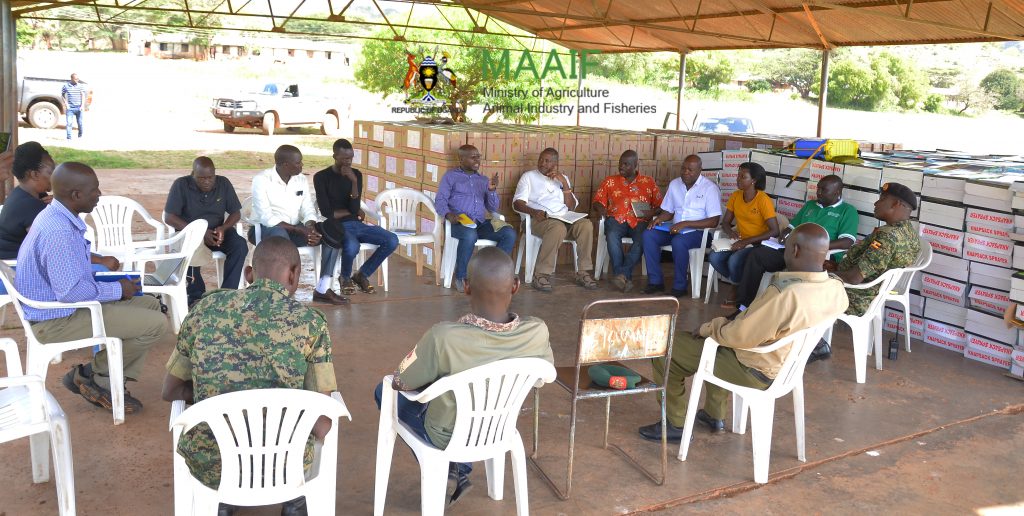
Status update and public advisory regarding Desert Locust Invasion
Moroto, 15th February 2020. Coordination and planning meetings for field team leaders of the Desert Locust Control Operations in Karamoja sub-region and Teso sub-region chaired by Mr. Pius Wakabi Kasajja the Permanent Secretary of the Ministry of Agriculture, Animal Industry and Fisheries.
Background to the invasion
The first swarm of desert locusts in the country flew in through Alakas sub-county in Amudat District and settled in Kakamongole in Nakapiripirit District on Sunday Night.
Another swarm flew into the country through the same path on Thursday.

What the public needs to know:
1. The first swarm of Desert Locust that was sighted on Sunday night was mainly made up of mature locusts (yellow in colour). However, these have laid eggs on the Ugandan side of the boarder.
2. In one round of laying eggs, the female Desert Locust lays up to about 300 eggs. This means that over it’s lifetime, one female Desert Locust, which lays three times lays up to 900 eggs.
3. The eggs laid by the Desert Locusts hatch in 14 days. The nymphs and young Desert Locusts (mainly pink in colour) that will come after the first hatching are the most dangerous since they have high need for food.
4. Surveillance teams which are also working with the support of the Uganda People’s Defense Forces in the region are assessing the travelling patterns of the first swarm to construct maps of sites where the eggs have been laid.
While the spraying of the adult Desert Locusts is being carried out, these surveillance maps will be used to provide coordinates for the aircraft that will be used in the aerial spraying of the nymphs and immature locusts that will be hatched into the region in less than 2 weeks.
5. While some of the teams in the area may have been seen burning bushes and chasing the adult Desert Locusts, awareness creation teams from the District and Ministry of Agriculture have been expanded and are now reaching more people with the following sets of information:
(a) the burning of bushes is hazardous to the environment in the area
(b) chasing the adult Desert Locusts can make it more difficult for the Control Teams to fight them in massive swarms since they can easily separate into more swarms. This makes all means, including aerial spraying more difficult.
6. The supporting experts from the Food and Agriculture Organisation of the United Nations, the Desert Locust Control Organisation and National Agricultural Research Organisation are still in the region undertaking refresher training of extension workers and surveillance teams from the Ministry of Agriculture and Districts in the region
7. The two aircrafts for aerial spraying will be in the country before the first hatching and will be loaded with the pesticide needed in the control of the Desert Locusts.
